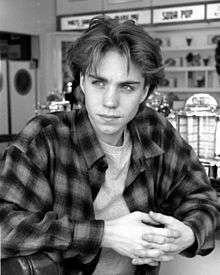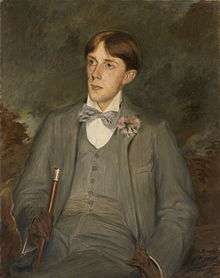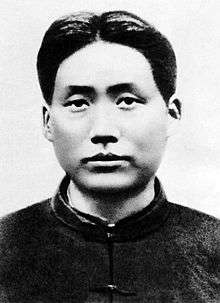Curtained hair


Curtained hair or curtains is a hairstyle featuring a long fringe divided in either a middle parting or a side parting, with short (or shaved) sides and back. Curtained hair generally applies to males, although an alternative name, the undercut, is used for both male and female haircuts following this style.[1] Variations on this haircut have been popular in Europe and North America throughout the 20th century and in the 21st century.
Origins

A shorter version of the haircut, parted in the middle and kept in place with pomade became popular during the Edwardian era as a more practical alternative to the longer hair and sideburns fashionable from the 1840s to 1890s. This was due in part to the popularity of sporting activities like rugby football among younger men.
From the turn of the century until the 1920s, a longer variant of the undercut was popular among young working class men, especially members of street gangs. In interwar Glasgow, Neds, the precursors to the Teddy Boys, favoured a haircut that was long on top and cropped at the back and sides. Despite the fire risk, lots of paraffin wax was used to keep the hair in place.[2] Other gangs who favored this haircut were the Scuttlers of Manchester, and the Peaky Blinders of Birmingham, because longer hair put the wearer at a disadvantage in a street fight.[3]
Revival
During the late 1980s centrally parted hair, derived from the bowl cut, made a comeback among fans of new wave, synthpop, and electronic music as an alternative to the mullets and backcombed hair worn by glam metal bands.[4]
In the UK, curtains were popularised during the early 1990s by the Baggy or Madchester scene as well as contemporary Shoegaze and Britpop bands such as The Happy Mondays, Inspiral Carpets, early Blur, The Beautiful South, and the Stone Roses.
A longer, collar-length version of the haircut went mainstream in the early to mid 1990s and was worn by many celebrities, most notably Tom Cruise.[5][6]
In popular culture
Actors who have worn the longer version of curtained hair include Tom Cruise in Mission: Impossible 2,[7][8] Brendan Fraser in The Mummy Returns,[9] and Leonardo DiCaprio in Titanic.[10]
It is unclear when this style became fashionable in East Asia, but evidence of it in Japanese media can be seen from before the 1990s. Many anime characters, such as Dragon Ball Z's Trunks, James from Pokémon's Team Rocket,[11] ,Fullmetal Alchemist's Edward Elric and Naruto's Sasuke and his older brother, Itachi Uchiha have this haircut.[12] Japanese video game characters with this haircut include James Sunderland from Silent Hill 2 and Leon S. Kennedy from Resident Evil 4.
References
- ↑ Douglas, Joanna (17 November 2011). "'Hitler Youth' Haircut Gaining Popularity". Yahoo! Shine. Retrieved 8 April 2013.
- ↑ Christie, Stuart (2002). My Granny Made Me an Anarchist. Oil & Gas USSR. pp. 87–88. ISBN 1-873976-14-3.
- ↑ Davies, A. (1998), "Youth gangs, masculinity and violence in late Victorian Manchester and Salford", Journal of Social History 32 (2)
- ↑ Williams, Alex (15 November 2011). "A Haircut Returns From the 1930s". The New York Times. Retrieved 8 April 2013.
- ↑ Tom Cruise in 1983
- ↑ Hollywood.com
- ↑ Tom Cruise hair
- ↑ Tom Cruise's hair
- ↑ Brendan Fraser Archived 2014-09-10 at the Wayback Machine.
- ↑ Leonardo DiCaprio
- ↑ ^ Kusaka, Hidenori, & Satoshi Yamamoto. Pokémon Adventures, Volume 14. Chuang Yi Publishing Pte Ltd., July 2004. ISBN 981-260-014-0
- ↑ ^ Director: Seiji Mizushima (October 4, 2003). "太陽に挑む者". Fullmetal Alchemist. Episode 1. Tokyo Broadcasting System.